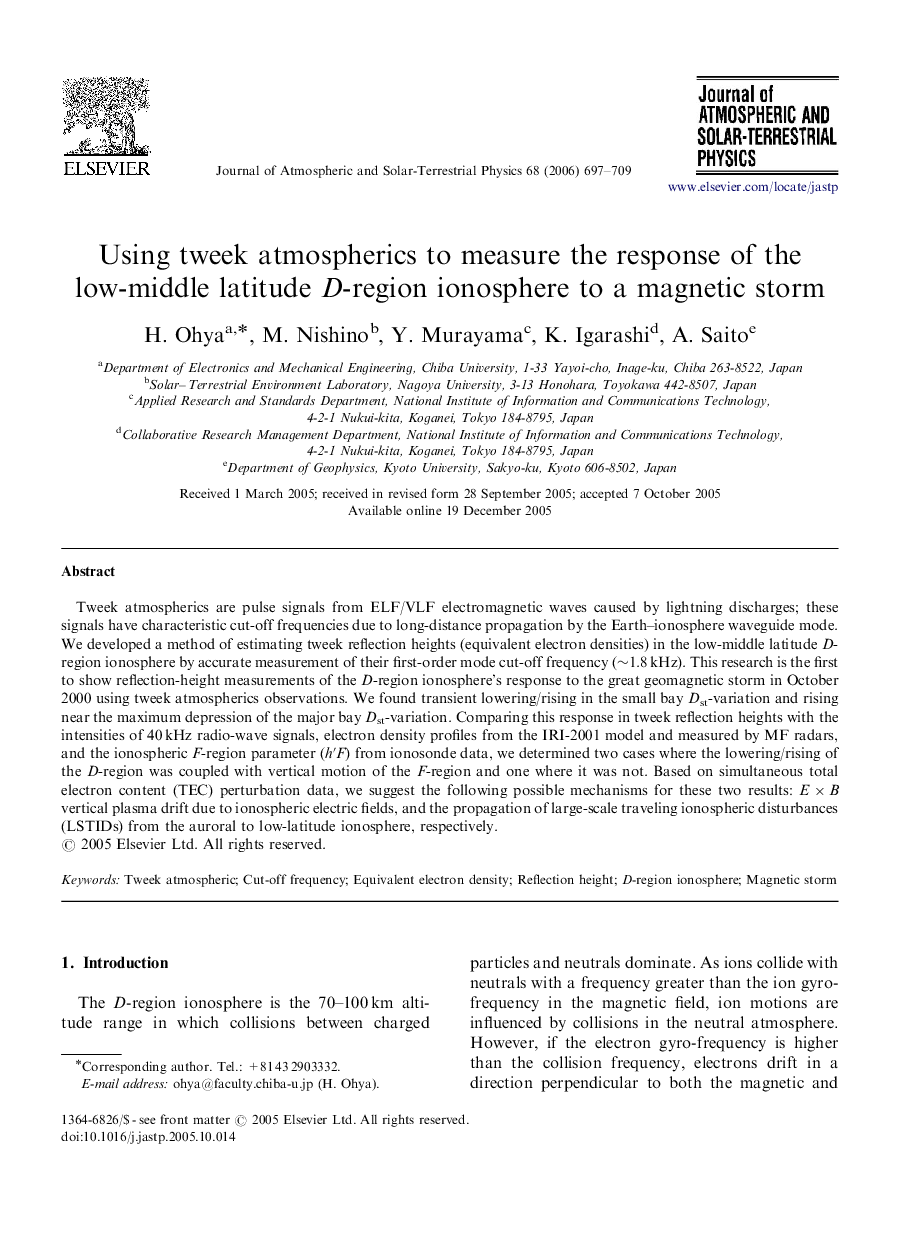| Article ID | Journal | Published Year | Pages | File Type |
|---|---|---|---|---|
| 1778460 | Journal of Atmospheric and Solar-Terrestrial Physics | 2006 | 13 Pages |
Tweek atmospherics are pulse signals from ELF/VLF electromagnetic waves caused by lightning discharges; these signals have characteristic cut-off frequencies due to long-distance propagation by the Earth–ionosphere waveguide mode. We developed a method of estimating tweek reflection heights (equivalent electron densities) in the low-middle latitude D-region ionosphere by accurate measurement of their first-order mode cut-off frequency (∼1.8 kHz). This research is the first to show reflection-height measurements of the D-region ionosphere's response to the great geomagnetic storm in October 2000 using tweek atmospherics observations. We found transient lowering/rising in the small bay Dst-variation and rising near the maximum depression of the major bay Dst-variation. Comparing this response in tweek reflection heights with the intensities of 40 kHz radio-wave signals, electron density profiles from the IRI-2001 model and measured by MF radars, and the ionospheric F-region parameter (h′F) from ionosonde data, we determined two cases where the lowering/rising of the D-region was coupled with vertical motion of the F -region and one where it was not. Based on simultaneous total electron content (TEC) perturbation data, we suggest the following possible mechanisms for these two results: E×BE×B vertical plasma drift due to ionospheric electric fields, and the propagation of large-scale traveling ionospheric disturbances (LSTIDs) from the auroral to low-latitude ionosphere, respectively.
